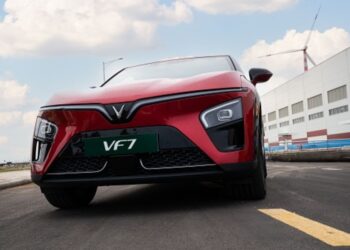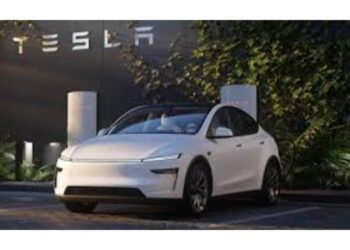As the world accelerates toward sustainable mobility, the Electric Vehicle Power Inverter Market is playing a pivotal role in shaping the electric mobility landscape. Often overlooked by consumers but critical to performance, the EV power inverter acts as the technological bridge between the vehicle’s battery and its motor. Without it, electric vehicles (EVs) would not be able to convert stored DC energy into usable AC energy for propulsion. As EV adoption rises globally, demand for efficient and high-performing inverters is experiencing significant growth. According to Persistence Market Research, this surge is expected to continue, driven by evolving technology, tighter emissions standards, and a global shift toward clean transportation.
What Is an EV Power Inverter and Why Does It Matter?
The Electric Vehicle Power Inverter Market is essentially the brain of the electric drivetrain. It transforms the direct current (DC) electricity stored in the battery into alternating current (AC) electricity needed by the electric motor. Additionally, it controls the motor’s speed and torque, enabling smooth acceleration and regenerative braking.
Modern electric vehicles rely on advanced power electronics for optimal efficiency, performance, and thermal management. Power inverters not only influence driving range but also affect overall vehicle efficiency and cost. As EV manufacturers race to deliver longer-lasting batteries and faster charging systems, innovations in inverter design have become indispensable.
Key Technologies Shaping the EV Power Inverter Market
Technological advancements are rapidly transforming the Electric Vehicle Power Inverter Market. Key trends include:
- Silicon Carbide (SiC) and Gallium Nitride (GaN) Semiconductors: These wide-bandgap materials offer greater energy efficiency, lighter weight, and better thermal performance compared to traditional silicon-based inverters. SiC-based inverters are particularly useful in high-voltage EV platforms and are being adopted by leading automakers like Tesla and Porsche.
- Integrated Inverter-Drive Units: Automakers are integrating inverters directly with the electric motor and transmission to reduce size, weight, and wiring complexity. These compact systems improve thermal efficiency and streamline vehicle assembly.
- AI-Powered Control Algorithms: Intelligent software is being embedded into inverter systems to optimize torque output, monitor thermal behavior, and ensure real-time diagnostics for predictive maintenance.
Market Drivers Fueling Growth of the EV Power Inverter Sector
Several macroeconomic and technological forces are driving expansion in the Electric Vehicle Power Inverter Market:
- Global EV Adoption: Countries around the world are setting aggressive timelines to phase out internal combustion engines. As a result, global EV production is skyrocketing, boosting demand for critical power electronics components.
- Battery Innovation: With improvements in lithium-ion and solid-state battery technologies, there is a corresponding need for inverters that can handle higher voltages, greater current flows, and advanced control features.
- Government Regulations and Incentives: Regulatory frameworks promoting zero-emission vehicles, coupled with financial incentives for EV buyers, are accelerating investment in EV infrastructure—including power inverter manufacturing.
- OEM and Tier-1 Collaborations: Automotive giants are increasingly partnering with semiconductor and electronics firms to co-develop next-gen inverters. This collaborative approach speeds innovation and enhances cost competitiveness.
Regional Trends: Who’s Leading the EV Power Inverter Market?
The Electric Vehicle Power Inverter Market exhibits varying growth dynamics across key regions:
- Asia Pacific leads in both production and consumption. China, South Korea, and Japan house major EV manufacturers and semiconductor players, making this region a powerhouse for inverter innovation. Chinese EV brands like BYD and NIO are integrating proprietary inverter designs to differentiate performance.
- Europe is witnessing rapid investment due to stringent EU carbon neutrality goals. German automotive brands are pioneering inverter efficiency as part of their luxury EV offerings.
- North America, especially the U.S., is bolstering inverter demand through the expansion of EV production lines and incentives under the Inflation Reduction Act. Tesla’s vertical integration of power electronics sets a competitive benchmark.
- Emerging Markets in Latin America, Africa, and the Middle East are catching up, focusing primarily on cost-effective inverter solutions for electric buses and two-wheelers.
Challenges and Constraints in the Power Inverter Market
Despite its growth trajectory, the market is not without hurdles:
- Raw Material Dependency: Shortages of rare earth metals and semiconductor components can cause supply chain bottlenecks, impacting inverter production.
- Thermal Management Issues: Efficiently cooling inverters in high-performance EVs remains a technical challenge, especially in compact vehicle architectures.
- Standardization Gaps: With various OEMs using different voltage platforms, achieving cross-platform compatibility for power inverters is difficult and costly.
Opportunities on the Horizon: What’s Next for EV Inverter Technology?
The coming years present numerous opportunities for innovation and growth in the EV inverter space:
- Modular and Scalable Inverter Platforms: Creating flexible inverter architectures that can be adapted to different vehicle classes—passenger cars, trucks, scooters—will be a game-changer.
- Wireless Charging Integration: Some developers are exploring power inverters that can support bi-directional energy flow and wireless charging compatibility, enabling Vehicle-to-Grid (V2G) functions.
- Inverter-as-a-Service Models: Subscription-based inverter analytics and upgrades could become part of broader EV service offerings in connected car ecosystems.
- Vertical Integration: OEMs are increasingly bringing inverter development in-house to ensure tighter performance control and supply chain resilience.
According to Persistence Market Research, the electric vehicle components ecosystem is headed for rapid vertical and horizontal consolidation, and power inverters will be at the center of that transition.
As EVs redefine the automotive landscape, the Electric Vehicle Power Inverter Market stands as one of the most critical enablers of this transformation. Inverters are no longer just components; they are becoming smart systems that determine how efficiently energy is used and how vehicles respond to driver input.
With major advancements in semiconductor technology, increased global EV adoption, and growing interest from automakers to innovate in-house, the inverter market is poised for explosive growth. Stakeholders that invest in robust R&D, materials science, and integrated system design will lead the race in defining the next era of electric mobility.
As EV adoption matures, the conversation around energy efficiency will move beyond just battery range—it will revolve around how intelligently that energy is managed, and in that conversation, the power inverter will have the loudest voice.













